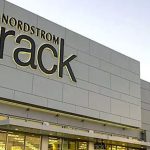Foot Locker, Inc. said that a trend to higher selling prices, access to more marquee product, and a “somewhat lower” promotional posture on their part is fueling a renewed optimism as the retailer moves into its new fiscal year. The improving comp store sales gains for the fourth quarter (SEW_0506) have apparently carried over into February as the U.S. business posted a high-single-digit comp store sales gain for the period. The business in Europe that reportedly rebounded in January moved back into negative territory in February.
The fourth quarter got a boost from Nike, Champs, and Canada, but got hurt by Europe and apparel. Excluding the apparel impact in Q4, Foot Locker chairman and CEO Matt Serra said that domestic comps would have been up in the mid- to high-single-digit range.
Serra said that they will add another $200 million (at retail) of Nike marquee goods this year in the U.S., pushing Nikes share of sales back up to the mid- to high- 40% range from its current level in the low 40s, “depending on how things go.” The improving relationship has Foot Locker again rolling out the Nike “House of Hoops” presence in their stores, with 30 to 40 doors set up over the last few weeks en route to “as many as 800 stores in the very near future.” Serra said they had gotten off track with the program when they had their “little spat with Nike.”
Foot Locker is also re-investing back into the Tuned Air business. Serra said their European, Canadian, and Australian operations continue to sell in excess of a million pairs a year, but the successful re-launch of the product in the U.S. over Christmas and the last month has the retailer talking about bigger numbers in the U.S., albeit less than the four million plus that they used to sell in the market.
The expansion of the marquee product range in the stores is cited as one of the key reasons that average selling prices rose 4% to 5% in January.
Serra said that Champs is well-positioned to post “significant” increases in both comps store sales and divisional profit in 2005, a position that will be helped by a stepped up effort in opening new stores in the coming year. The Champs business was up in very-high-singles for the fourth quarter, a gain that management told SEW was due to a “broader selection of marquee goods.”
In Canada, new offices and merchants are fueling enthusiasm for prospects there. CFO Bruce Hartman said they are looking very crisp and very exciting north of the border, with nearly 90% of the stores either new or renovated. He also said its a much faster market that is able to sell more of the European type of merchandise that doesnt sell as well in the U.S. He said they were just a few basis points from posting a double-digit division profit in Canada.
On the negative side, the Europe business comped down in low-single-digits in the fourth quarter, but had shown some improvement in January. Still, the move back to a decline in February leaves management unconvinced that the retail environment there is totally “back on track”. Serra said they would be looking for a low-single-digit decline in comps in Europe in 2005.
Europe passed the billion dollar mark for the first time in fiscal 2004 and division profit was said to have “increased nicely” from the prior year. Serra said they were not doing as well as they would like in the UK, a region where they have roughly 70 doors, but the region is “extremely profitable.”
Licensed Apparel was the main culprit for the negative apparel impact in the fourth quarter, but Foot Locker said they continue to generate solid sales gains from Private Label and Branded product. Licensed was also seen as a primary reason for a low-single-digit decline in sales in the Consumer Direct division. Sales in the Internet channel continued to show solid growth, but Catalog sales waned as more consumers moved on-line to make purchases.
While management said they are more focused on Private Label in the Foot Locker stores, they see much more opportunity for Branded Apparel in the Footaction stores, particularly in the “urban type of merchandise.”
Footaction, which added about three cents to the bottom line in Q4, will get 15 new stores in 2005. The stores still hurt margins a bit in Q4, slicing about 40 basis points off of the 10 basis point improvement for the total company.
Inventory would have been up 11% at year-end, excluding the impact of Footaction and FX rates.
>>> The move back to House of Hoops will certainly put the hurt on those that tried to pick up basketball share when Nike pulled product
>>> Where would the business be today if the “little spat” hadnt opened the door for competitors and sliced ASPs over the last two years















